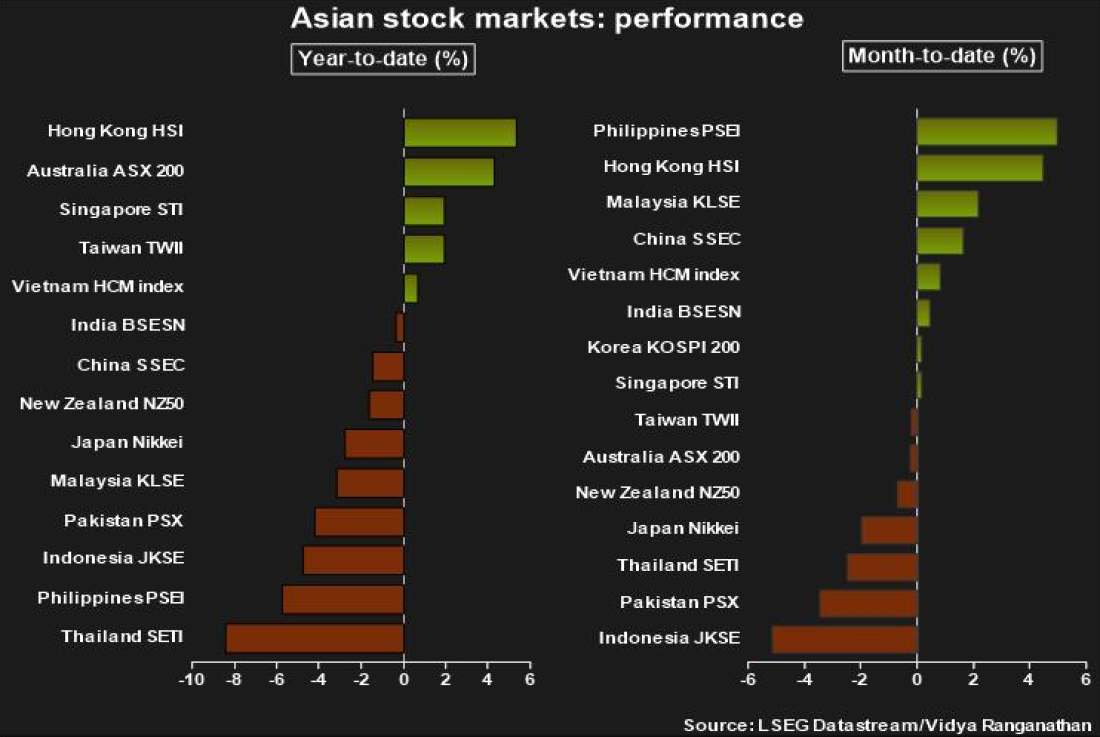UN to make 'tough, brutal choices' as it cuts its aid appeal to $23 billion for 2026
Tens of millions of people in urgent need of help won't be getting much assistance next year. That's according to the United Nations which launched a ...
Wall Street futures slipped and the dollar strengthened on Monday after President Donald Trump reaffirmed plans for 25% tariffs on steel and aluminium, fueling concerns over trade tensions and inflation.
Speaking aboard Air Force One, Trump confirmed that tariffs on all steel and aluminium imports would be announced on Monday, with additional trade measures following on Tuesday or Wednesday. The comments heightened concerns over a potential trade war, especially after German Chancellor Olaf Scholz warned that the European Union would respond "within an hour" if U.S. tariffs targeted European goods.
China is also set to enforce retaliatory tariffs on U.S. exports, with no breakthrough in negotiations between Beijing and Washington. Analysts predict that currencies of targeted nations will weaken against the dollar, allowing them to offset the impact of new tariffs and remain competitive in trade.

Markets are also factoring in the inflationary risks of new tariffs, which could limit the Federal Reserve’s ability to cut interest rates. Investors had already lowered their expectations for Fed rate cuts this year, following strong U.S. employment data.
Dollar Gains as Yields Rise
The dollar index rose 0.3% to 108.38, with the euro slipping to $1.0295 and the Australian dollar falling 0.5% to $0.6245. The yen remained steady at 151.32, as speculation grows over a potential Bank of Japan rate hike in the coming months.
Stock market futures turned negative, with S&P 500 futures slipping 0.2%, Nasdaq futures down 0.3%, and Nikkei futures falling to 38,415 from Friday’s close of 38,787.
Tariff Impact on Corporate Earnings
Concerns over trade policy uncertainty weighed on investor sentiment. Analysts at Goldman Sachs warned that the effective U.S. tariff rate could rise by five percentage points, reducing earnings per share by 1% to 2% in 2025.
Gold Prices Hold Near Record Highs
Despite a stronger dollar and rising bond yields, gold prices remained firm at $2,860 per ounce, after hitting a record $2,886. Reports suggest increased demand for physical gold shipments to the U.S. amid speculation that Trump could impose tariffs on the metal.
As markets brace for new trade measures, investors remain focused on inflation risks, Fed policy moves, and the impact of escalating tariff disputes on global trade flows.
A coup attempt by a “small group of soldiers” has been foiled in Benin after hours of gunfire struck parts of the economic capital Cotonou, officials said on Sunday.
A delayed local vote in the rural Honduran town of San Antonio de Flores has become a pivotal moment in the country’s tightest presidential contest, with both campaigns watching its results as counting stretches into a second week.
FIFA releases the 2026 World Cup schedule with match dates, venues, and key fixtures. See when host nations USA, Mexico, and Canada play and get an overview of group stage and knockout rounds.
Lava fountains shot from Hawaii’s Kīlauea volcano from dawn to dusk on Saturday, with new footage showing intensifying activity at the north vent.
McLaren’s Lando Norris became Formula One world champion for the first time in Abu Dhabi, edging Max Verstappen to the title by just two points after a tense season finale.
U.S. industrial production rose by 0.1% in September, rebounding after a decline in August, while capacity utilisation remained unchanged, according to Federal Reserve data on Wednesday.
Google’s YouTube has announced a “disappointing update” for millions of Australian users and creators, confirming it will comply with the country’s world-first ban on social media access for under-16s by locking affected users out of their accounts within days.
President of Turkmenistan Serdar Berdimuhamedow has signed the “On Virtual Assets” law, which will officially legalise cryptocurrency mining and exchange activities in the country from 1 January 2026.
European Union ministers will urge senior U.S. trade officials to implement more elements of the July EU–U.S. trade deal on Monday, including cutting tariffs on EU steel and lifting duties on goods such as wine and spirits.
Google has announced a major update for its Pixel 10 series: owners can now send and receive files with Apple devices using AirDrop, without any collaboration from Apple. The new functionality applies to iPhones, iPads, and macOS devices, though for now it is limited to the Pixel 10 line.
You can download the AnewZ application from Play Store and the App Store.

What is your opinion on this topic?
Leave the first comment